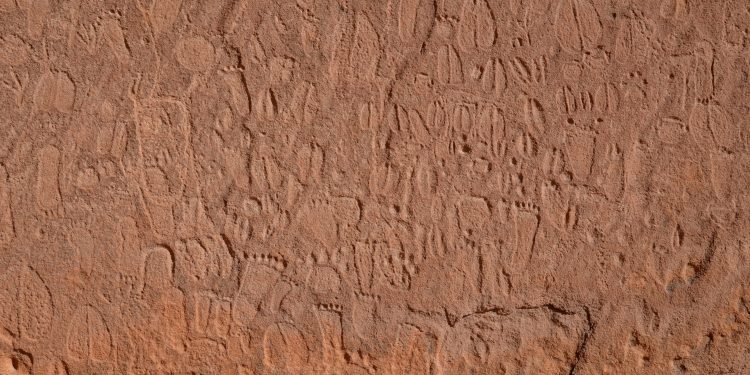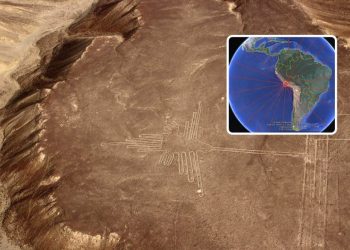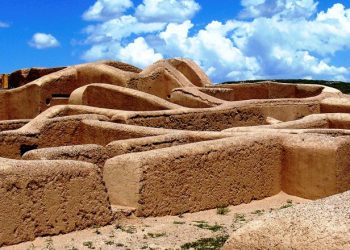In the expansive landscapes of modern-day Namibia, remnants of the Later Stone Age come alive through meticulously detailed rock engravings of human and animal footprints. Recent findings by Andreas Pastoors from Friedrich-Alexander-Universität Erlangen-Nürnberg, Germany, and his team suggest that these Stone Age artists went beyond superficial imprints. Their work, showcased in the open-access journal PLOS ONE, emphasizes the exceptional detail present in these ancient engravings.
Across the globe, prehistoric rock art traditions prominently feature engravings of animal tracks and human footprints. Namibia stands out in this domain, showcasing intricate hunter-gatherer rock art from the Later Stone Age. However, much of the academic community has grouped these symbolic engravings alongside geometric patterns. This practice has unfortunately overshadowed their significance, despite their global prevalence.
Enlisting Modern Expertise: The Kalahari Trackers’ Insights
Venturing into the heart of the Doro Nawas Mountains in central Western Namibia, researchers partnered with Indigenous tracking connoisseurs from the Kalahari desert. Analyzing these ancient carvings, these experts astoundingly identified the species, sex, age, and even the specific limb associated with over 90% of the 513 engravings.
The study revealed fascinating details: the engravings depicted a broader array of animals through their tracks than direct portrayals of the creatures. Additionally, the artists had distinct preferences. They leaned towards representing adult animals more frequently and showed a significant bias towards male footprints over female ones.
Piecing Together Cultural Imprints
While these patterns undeniably hint at culturally ingrained preferences, their exact significance remains a mystery. The researchers advocate for continued collaboration with Indigenous experts, hoping their insights might provide further understanding. However, the true context and meaning behind these rock artworks, they caution, may always be a bit out of reach.
In the words of the authors, “The vast Namibian landscapes hold countless Stone Age visuals of humans and animals, including detailed footprints. Their potential remained untapped due to interpretational challenges. With the combined efforts of archaeologists and Indigenous trackers, these silent storytellers of the past are now getting the attention they deserve, revealing diverse animal species and intricate cultural narratives.”
Have something to add? Visit Curiosmos on Facebook. Join the discussion in our mobile Telegram group. Also, follow us on Google News. Interesting in history, mysteries, and more? Visit Ancient Library’s Telegram group and become part of an exclusive group.











